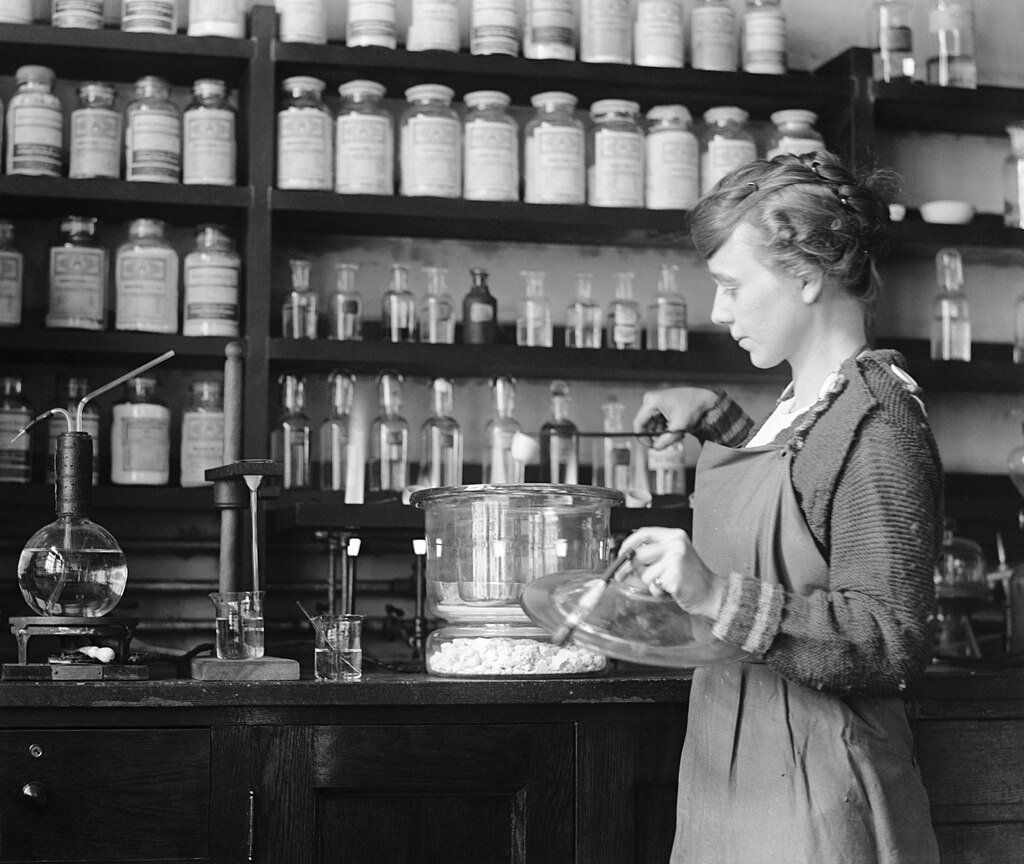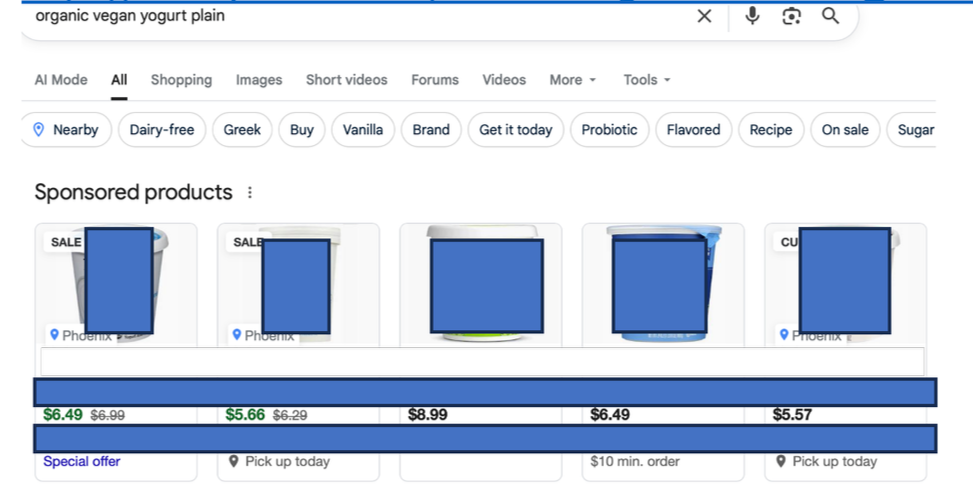https://commons.wikimedia.org/wiki/File:Margaret_D._Foster,_in_Lab,_4_October_1919.jpg, https://upload.wikimedia.org/wikipedia/commons/1/18/Margaret_D._Foster%2C_in_Lab%2C_4_October_1919.jpg
Deborah Tosline published the book Skin Remodeling DIY: An Introduction to the Underground World of Do-It-Yourself Skincare in 2015. Her approach to skincare is based on a scientific background, a love of research, and over 40 years of DIY skincare experience. In 2025, Deborah became a certified Integrative Wellness Coach through the Andrew Weil Center for Integrative Medicine.
https://www.skinremodelingdiy.com
Living frugally supports financial independence and provides many benefits. Times are tough as billionaires aggressively gather excessive wealth by squeezing us in every way imaginable - shrinking product volumes, producing enormous amounts of waste, and using low-quality, potentially toxic ingredients.
Whether you want to stand up to the seemingly impenetrable billionaire club, protect the environment, save your precious dollars, or use healthy and nourishing products, Do-It-Yourself (DIY) methods may help you achieve these goals.
DIY is based on “sweat equity” where you put in the effort to gain benefits that improve your quality of life for the cost of basic materials.
Living paycheck to paycheck is stressful; living without a paycheck is life-threatening. Learning how to DIY can increase independence and open new worlds as you expand your abilities.
DIY often requires learning new information. The internet provides access to both free and paid learning tools. Before computers and the internet were available, the library was my go-to for new information. I would check out the 21-book limit for my current topic of interest. When I remodeled my kitchen, I checked out home maintenance and remodeling books, skimmed them all and selected a few to focus on.
I still use the library for audio books and entertainment media. These days, I primarily use the internet for DIY instructions. For example, I learned how to repair my water heater by watching YouTube videos! Granted, I didn’t have hot water for three weeks as I waited for parts that were only available online - but to this day, it is satisfying to have fixed the water heater myself. I experienced a new brain challenge and probably saved $800–$1,200 USD!
One of my favorite DIY categories is personal care products. This allows me to save money and use premium products that exceed retail quality.
There is an initial investment in materials when starting DIY projects, but savings add up quickly as you reuse ingredients.
In this article I share two Personal Care Product (PCP) recipes that I’ve used repeatedly over the past five to seven years, along with one staple food recipe that supports skin health. I did not create these recipes, nor am I an affiliate for any products or entities mentioned. Links are provided for the DIY recipes.
Quick Internet search for organic face cream to check prices, 10/30/25.
Personal Care Products
These recipes provide easy methods that yield reliable and effective lotions, creams, and deodorants.
DIY Ingredients
To the greatest extent possible, I vote with my dollars to support ingredients, products, and entities that enhance personal, societal, and environmental well-being. Strive to use cold-pressed, sustainably harvested organic oils and butters. Try to choose the highest-quality ingredients available. Most common kitchen oils will work, though different oils affect final product characteristics.
DIY Lotion Recipe
Recipe – “How to Make a Simple, Homemade Lotion and How to Customize it”
MATERIALS
• 65 g distilled water (can use hydrosols)
• 30 g oil (can use a combination of oils)
• 4 g emulsifying wax — use 5 g for a thicker lotion
• 1 g preservative (adjust to recommended dosage — 3.5 g for Leucidal)
Optional ingredients
• 1 g lavender essential oil or another essential oil, for fragrance
• 3 drops lactic acid to adjust down the pH, if needed
Detailed instructions for this recipe are available on thethingswellmake.com. This recipe produces anything from a light face cream to a heavier body cream, depending on the oils and butters used. Specialized oils and butters or cooking oils such as avocado, olive, or coconut may be used. Emulsifiers are required to blend oil and water. Use an emulsifying wax to ensure good results. Beeswax alone will not emulsify. I multiply this recipe by four, and recently made sixteen times the base recipe.
Facial Cream
My tips for a light face cream:
“Dry oils” such as grapeseed or sunflower oil absorb quickly and have a light feel – my preference
A kitchen scale provides the best accuracy
Use what you have — you’ll learn as you go
Heat water ingredients in one bowl and oils/butters/emulsifier in another to similar temperature
Choose an emulsifier and preservative with low Environmental Working Group (EWG) toxicity ratings
Steps: measure, heat, blend, cool, blend again
Add preservative and essential oils (EOs) after cooling
Add “actives” like peptide drops for a high-tech cream
EOs have been used since 4500 BC by Ancient Egyptians, I currently use lavender, frankincense, heliochrysum, carrot, and a few others
Do not confuse EOs with synthetic fragrances — I avoid them completely
Clean handling improves results
I refrigerate a 16-oz batch and refill smaller containers for daily use
PS it is easy to create sunscreen by adding zinc oxide at 20% by weight to a small portion
Luxurious and affordable — no plastic waste, simple ingredients
Quick Internet search for organic body cream to check prices, 10/30/25.
Body Cream
Same recipe, different oils and butters — different results. Versatility! My tips for a nourishing body cream:
Use many of the facial-cream tips
Choose heavier emollient oils; combine with sunflower oil for better absorption
I use herbal oils with anti-inflammatory properties — retail comfrey and calendula, and DIY arnica oils
Adding butters (I use shea and cocoa) creates a deeply moisturizing cream
This feels like a nurturing supplement — use it daily, ha ha.
It is easy to be generous with this luxuriant cream when you make it yourself; I made a 16-ounce batch that may last 3 to 4 months
Quick Internet search for organic deodorant to check prices, 10/30/25.
Deodorant
Recipe – “DIY Natural Deodorant…That Actually Works!”
2 1/2 tbsp unrefined coconut oil
2 1/2 tbsp unrefined shea butter
1/4 cup arrowroot starch/flour
1 1/2 tbsp baking soda
6 drops lavender essential oil
6 drops grapefruit essential oil
1 drop tea tree essential oil (optional)
Instructions for this recipe are located on thehealthymavon.com here.
I’ve avoided mainstream deodorants since age 14 when aluminum was a concern, and I’ve continued this trend. This recipe is easy, pleasant, and works beautifully. I follow it exactly.
Quick Internet search for organic vegan yogurt to check prices, 10/30/25.
Yogurt Recipe (Vegan Soy Yogurt)
This recipe is for vegan yogurt using soy milk. I do not know how it works with other milks. After stopping dairy about five years ago, yogurt was hard to replace. Store-bought non-dairy yogurt is pricey and not to my taste.
I tried DIY yogurt using multiple methods — adding retail vegan yogurt as a starter, specialty starters, probiotics — sterilizing equipment, heating DIY soy milk and retail soy milk— minimal success.
Then I discovered the simplest YouTube method using chili peppers as a starter. I didn’t save the video (and can’t find it again), but here’s the method that works every week:
Dishwasher clean 1-quart glass container with lid
1 quart retail soy milk with only two ingredients — organic soybeans and water (I use Trader Joe’s)
Wash 2 to 3 chili peppers; detach and keep the stems
Pour the soy milk into the glass container
Stir milk to create air bubbles
Place two to three chilis with stems in the soy milk
Place lid loosely on jar
Incubate at ~85–95°F for ~8 hours (oven light works)
First batch thickens nicely with slight chili note — disappears after batch 2
Save 3 tsp of yogurt to start the next batch
Each generation gets thicker and creamier — similar to Greek-style yogurt
I make about one quart per week
You can press it to make sour-cream or cream-cheese texture
This vegan yogurt is easy, delicious and versatile
Final Thoughts
Life is busy. Resources are variable. Making your own PCPs and whole foods can help with your budget and provide healthier products. These projects initially seemed a bit daunting, but I soon wondered why I didn’t begin sooner. The quality of the results and the cost savings continue to pleasantly surprise me. DIY — it’s easier than you might think.
If you need more information about DIY skin care, check out the local library, search the Internet, or check out my past Blog articles. It would be an honor for me if you purchased my skin care book. Thank you!
Take good care of yourselves!
XO Deborah
This article is intended to be used as general information only and is in no way intended to replace medical advice, be used as a medical treatment program, diagnosis, or cure of any disease or medical condition. There are no warranties, expressed or implied, regarding the effectiveness of the practices described in this article. Products or substances discussed herein are for educational purposes only and are not intended as recommendations of the author.




